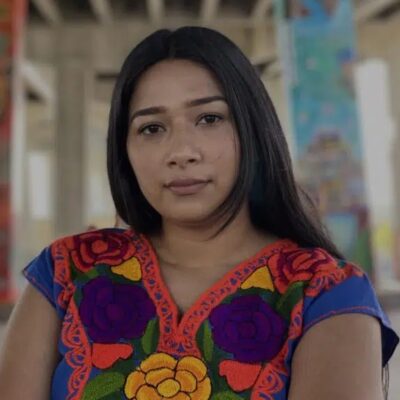Kimberly Gudino: I'm very excited about the street vendor bill, SB 972, which was recently passed. This bill was authored by Senator Lena Gonzalez.
Essentially, the street vendor bill does four different things. It decriminalizes sidewalk food vending. It creates a feasible process for getting a health permit. It simplifies the process for obtaining permitted carts. And it helps build out commissary spaces.
Brown Issues is heavily invested in this campaign, and so am I. My mom has been a street vendor for almost 20 years in my community in South Sacramento. Street vendors go through a lot. Growing up, my mom was harassed, she was given fake bills. It's a very vulnerable community. Many people take advantage because they know that when it comes to street vendors, many are undocumented and many carry cash.
In 2020, during COVID, many videos went viral on social media showing street vendors getting harassed and attacked. And no one said anything about it. I decided to create a blog around my story as a daughter of a street vendor and the struggles that street vendors like my mom face, and why we need to support and show up for street vendors.
While the attacks were going viral, Brown Issues organized events in honor of street vendors. We partnered up with the low-rider community and invited the community to come out and do street vendor buyouts. As a community, we wanted to show our people that we have their back.
Our very first event in honor of street vendors was Raza Day in Southside Park in Sacramento. We were told by the street vendors that they earned a total of $20,000 because that many people came out to support them and buy out their products. That was a very beautiful way to show up for them. They felt safe. They were surrounded by a community that respected them. They were surrounded by their favorite music. We brought the mariachi and they serenaded them. It was beautiful.
We saw SB 972 as our opportunity to show the community that we can show up for them through policy, too.
With this campaign, Brown Issues is supporting the community while simultaneously strengthening our policy arm. We are part of California Street Vendor Coalition and working with other organizations, including Western Center on Law and Poverty. This is a big win and we are excited for this. I am excited for this.

